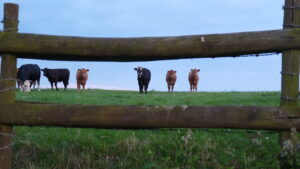What will the future of land use look like? Here’s one suggestion
 A team from the University’s Sustainable Consumption Institute (SCI) has researched the link between animal agriculture, biosafety and nature conservation to offer a suggestion as to how the future of land use could look. Dr Steffen Hirth and Dr Dan Welch suggest that by reducing animal agriculture, this will allow more available land for reforesting, including plant edible tree crops. These crops will provide a source of food as well as habitat for other edible plants, fungi and animals which will ultimately lead to wider biodiversity, food provisions and some restoration of biosafety (reducing the risk of disease spillover to humans from intensive farming and from wildlife affected by habitat loss).
A team from the University’s Sustainable Consumption Institute (SCI) has researched the link between animal agriculture, biosafety and nature conservation to offer a suggestion as to how the future of land use could look. Dr Steffen Hirth and Dr Dan Welch suggest that by reducing animal agriculture, this will allow more available land for reforesting, including plant edible tree crops. These crops will provide a source of food as well as habitat for other edible plants, fungi and animals which will ultimately lead to wider biodiversity, food provisions and some restoration of biosafety (reducing the risk of disease spillover to humans from intensive farming and from wildlife affected by habitat loss).
To come to this conclusion, Hirth and Welch looked at the sustainability problems connected with animal agriculture, biosafety and conservation in relation to habitat destruction and the risk of disease outbreaks. Agriculture can be linked to biodiversity and habitat loss, both through crops being produced purely to feed livestock, which depletes natural resources, and through biodiverse-rich land being used for agricultural fields to meet the ever-growing demand for animal products. Biosafety must be considered for the future of land use to reduce the risk of disease spillover, which is increased by intensive farming, and to increase biodiversity which is reduced by habitat destruction. A major recent example is that of the COVID-19 pandemic which may have been caused by disease spillover from wildlife to humans. Biodiversity conservation is key to both disease prevention and maintaining a functional food system.
Therefore, by decreasing animal agriculture, land can be better used to promote sustainability and contribute to a resilient agri-food system that will improve planet health.
This piece is based on a blog post which you can read in full here.
